Original Decadents: 1834-43
By:
July 6, 2010
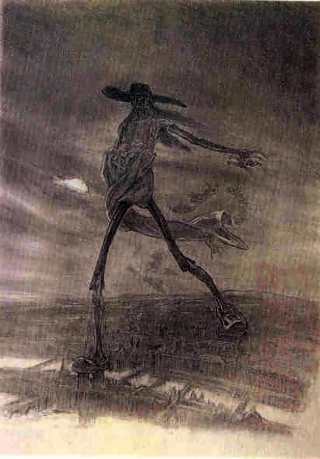
Men and women born from 1834 through 1843 were in their teens and 20s in the Eighteen-Fifties (1854-63; not to be confused with the 1850s), and in their 20s and 30s in the Eighteen-Sixties (1864-73).
With their usual ham-fistedness, the influential pop demographers William Strauss and Neil Howe lumped this cohort together with their immediate elders and have claimed that anyone born between 1822 and 1842 belonged to the so-called Gilded Generation. One can see why that uninspired label appeals to middlebrows. The Gilded Age (a derisory term coined by Twain) refers to the post-Civil War and post-Reconstruction eras (roughly 1865-1901), during which period a modern industrial economy — complete with a national transportation and communication network, the corporation as dominant form of business organization, and a managerial revolution — was rapidly created. Members of Strauss and Howe’s so-called Gilded Generation were in their prime during that period. As a result, among the wealthiest Americans in history are Frederick Weyerhaeuser (1834), Marshall Field (1834), Peter Widener (1834), Andrew Carnegie (1835), Jay Gould (1836), J. Pierpont Morgan (1837), John D. Rockefeller (born 1839), Oliver Payne (1839), and Henry Huttleston Rogers (1840).
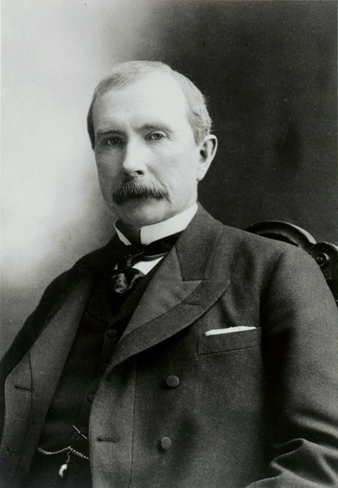
Contra Strauss and Howe, it ought to be stressed that many key Gilded Age figures were older — e.g., Cornelius Vanderbilt, the social Darwinist Herbert Spencer — or younger — e.g., Aaron Montgomery Ward, Theodore Newton Vail, George Westinghouse, Thomas Edison, Alexander Graham Bell, Henry Clay Frick, F. W. Woolworth, Andrew W. Mellon, and Frederick Winslow Taylor, not to mention Thorstein Veblen — than their so-called Gilded Generation. Which is not to suggest that the start or end dates of Strauss and Howe’s bogus generation ought to be extended! In fact, the two cohorts I’ve identified within Strauss and Howe’s so-called Gilded Generation (one born from 1825-33, the other from 1834-43) do have more in common with one another than they do with men and women born before 1823-4 or after 1843-4. But their differences cannot and must not be overlooked.
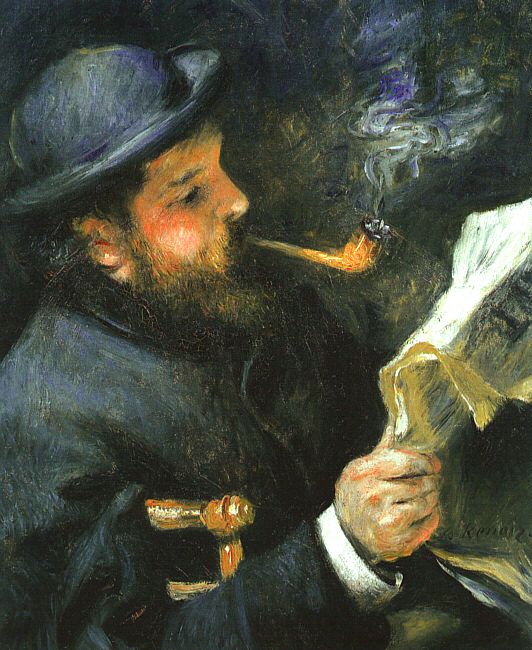
One thing the two generations have in common is the American Civil War. Most men and women born from 1825-33 were in their 20s and 30s during the Civil War, while those born from 1834-43 were in their teens and 20s. The two cohorts’ experience of the war may have differed, but they did share a formative experience with each other that Americans born before 1823-4 or after 1843-4 were spared. Another thing the two generations have in common is their betwixt-and-between-ness, i.e., when it comes to the art and literature they produced. Artists and writers born in the decades just before 1823-4 are romantics; and those born after 1843-4 are modernists. (The 1844-53 cohort, whom I’ve dubbed the New Prometheans, are the first truly modernist generation, which is why my generational periodization scheme originally began with them.) The 1825-33 cohort is neither romantic nor modern — it’s the first post-Romantic generation. I’ve dubbed their immediate juniors, a cohort which also bridged Romanticism and Modernism, the Original Decadents.
Though I’ve stressed the similarities between the 1825-33 and 1834-43 cohorts, they occupy notably different positions on the Romanticism-Modernism continuum. The older generation (the Post-Romantics) were, in a phrase, more romantic; the younger were more modernist. Modernist enough, at any rate, to offend journalists and critics who labeled certain transgressive (ugh) painters and writers with a misleading pejorative: Decadents. Though the term precedes this cohort, and though it is commonly applied to later artists and writers (Oscar Wilde, Aubrey Beardsley, Joris-Karl Huysmans, Comte de Lautréamont, Arthur Rimbaud), at the urging of one of my colleagues, I’ve decided to stick with this moniker.
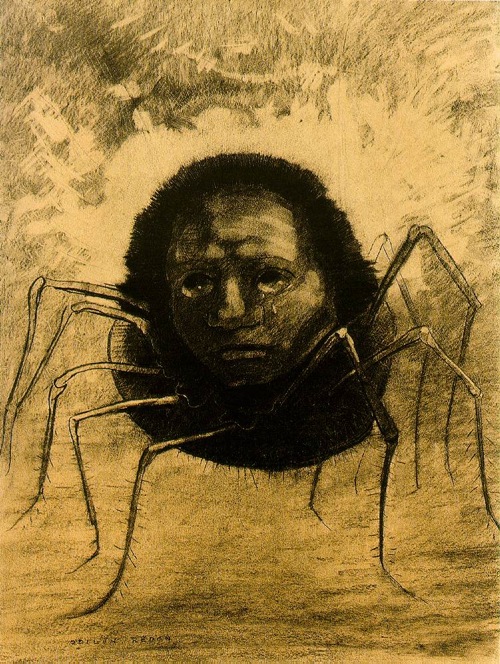
High-, low-, no-, and hilobrow members of the 1834-43 cohort include: Alfred Sisley, Ambrose Bierce, Auguste Villiers de l’Isle-Adam, Charles Sanders Peirce, Claude Monet, Edgar Degas, Ernst Haeckel, Henry Adams, Henry James, James McNeill Whistler, Leopold von Sacher-Masoch, Mark Twain, Mother Jones, Odilon Redon, Paul Cézanne, Paul Verlaine [honorary], Pierre-August Renoir, Stéphane Mallarmé, Thomas Hardy, William Dean Howells, William James, William Morris, and Winslow Homer. Friedrich Nietszche was born in the cusp year of 1844.
A reminder of my 250-year generational periodization scheme:
1755-64: [Republican Generation] Perfectibilists
1765-74: [Republican, Compromise Generations] Original Romantics
1775-84: [Compromise Generation] Ironic Idealists
1785-94: [Compromise, Transcendental Generations] Original Prometheans
1795-1804: [Transcendental Generation] Monomaniacs
1805-14: [Transcendental Generation] Autotelics
1815-24: [Transcendental, Gilded Generations] Retrogressivists
1825-33: [Gilded Generation] Post-Romantics
1834-43: [Gilded Generation] Original Decadents
1844-53: [Progressive Generation] New Prometheans
1854-63: [Progressive, Missionary Generations] Plutonians
1864-73: [Missionary Generation] Anarcho-Symbolists
1874-83: [Missionary Generation] Psychonauts
1884-93: [Lost Generation] Modernists
1894-1903: [Lost, Greatest/GI Generations] Hardboileds
1904-13: [Greatest/GI Generation] Partisans
1914-23: [Greatest/GI Generation] New Gods
1924-33: [Silent Generation] Postmodernists
1934-43: [Silent Generation] Anti-Anti-Utopians
1944-53: [Boomers] Blank Generation
1954-63: [Boomers] OGXers
1964-73: [Generation X, Thirteenth Generation] Reconstructionists
1974-82: [Generations X, Y] Revivalists
1983-92: [Millennial Generation] Social Darwikians
1993-2002: [Millennials, Generation Z] TBA
LEARN MORE about this periodization scheme | READ ALL generational articles on HiLobrow.
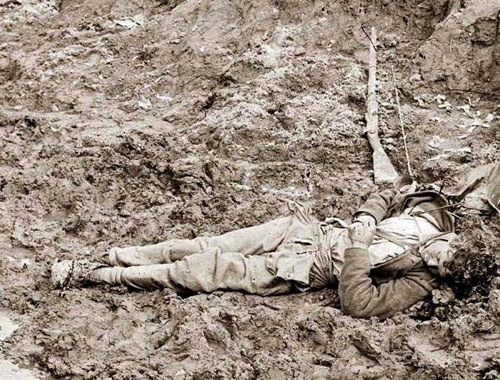
The Civil War & Gilded Age
The Gilded Age, and the Civil War (see notes below on Pragmatism) were important influences on the outlook of Americans who came of age during the Fifties and Sixties. Particularly on African-Americans; slavery effectively ended in the U.S. in the spring of 1865 when the Confederate armies surrendered.
During the decades before the Civil War, America was experiencing an industrial revolution, and becoming a predominately urban country. In Connecticut, “the American system of manufacture” — also known as the “system of interchangeable parts” — first established itself. As a result, the Civil War was one of the earliest true industrial wars in human history, and the practices of total war, developed by General Sherman, foreshadowed World War I. (Cf. Ambrose Bierce’s stories “An Occurrence at Owl Creek Bridge,” “Killed at Resaca,” and “Chickamauga.”) Like the shell-shocked writers and artists who survived WWI, Bierce, Charles Sanders Peirce, William James, Mark Twain, and other American thinkers and writers were sharp critics of the routine stupidities and empty illusions of wartime, and they heaped scorn upon those with absolute ideas — e.g., whether pro- or anti-slavery.
The Gilded Age was characterized by rapid industrialization and urbanization. Oil magnate John D. Rockefeller and steel tycoon Andrew Carnegie symbolized both the “self-made man” and the spirit of acquisition that dominated the late 19th century. This latter spirit is what Mark Twain and Charles Dudley Warner criticized in their 1873 novel The Gilded Age, drawing attention to the artificial standards of taste attributed to the growing American middle class. Other critics were also concerned about the dangerous relationship between the economic growth of the United States and the corresponding decline of moral values under capitalism. The trend toward realism in American literature has been attributed to authors’ (semi-romantic, semi-modernist) desire to focus on the experience of those who were not part of the middle class that so defined the standards of their age.
Post-Realism
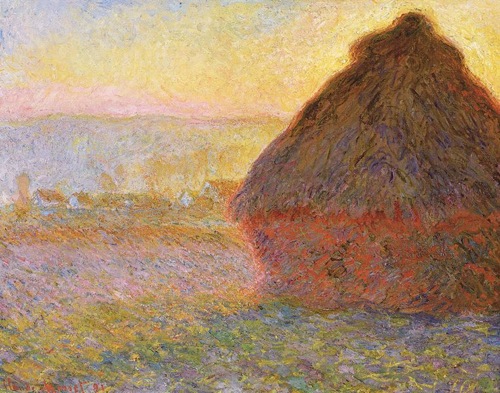
In Paris, the capital not merely of France but (in Benjamin’s phrase) the 19th century, earlier generations of artists and writers had pioneered Realism — which subscribed to an ideology of objective reality, truth and accuracy; and which, though not yet modernist, or even un-Romantic, revolted against the exaggerated emotionalism of the Romantic movement. Realism didn’t reach the United States until certain members of the 1834-43 generation — James McNeill Whistler, Winslow Homer, Thomas Eakins [honorary], Mary Cassatt [honorary]; and, in literature, William Dean Howells and Mark Twain — brought it home. (Note that of the painters, only Eakins remained a Realist throughout his career.) Meanwhile, although some French painters who belonged to the 1834-43 generation — including, famously, Degas — may have called themselves Realists, the Impressionists are best described (I think) as post-Realists.

Most of the founding Impressionists were born from 1834-43: e.g., Claude Monet, Pierre-Auguste Renoir, Alfred Sisley, Frédéric Bazille, Paul Cézanne, Edgar Degas, Armand Guillaumin, Berthe Morisot. (Camille Pissarro and Édouard Manet were born before ’34; Mary Cassatt, born in the cusp year of ’44, is an honorary OD.) Impressionist painting was realistic (and, therefore, romantic) insofar as it emphasized ordinary subject matter and the accurate depiction of light in its changing qualities; however, insofar as one of the changing qualities of light the Impressionists sought to depict was its change over time, in a single work of art, and insofar as they regarded movement as a crucial element of human perception and experience, and insofar as they prized unusual visual angles, the Impressionists were proto-modernist.
Like the American psychologist William James, another member of the OD generation, the Impressionists were close students of the experience of experiencing. By recreating the sensation in the eye that views a subject, rather than recreating a subject, and by creating a variety of techniques and forms, Impressionism paved the way for such truly modernist movements in painting as Neo-Impressionism, Post-Impressionism, Fauvism, and Cubism.
Symbolism and Aestheticsm
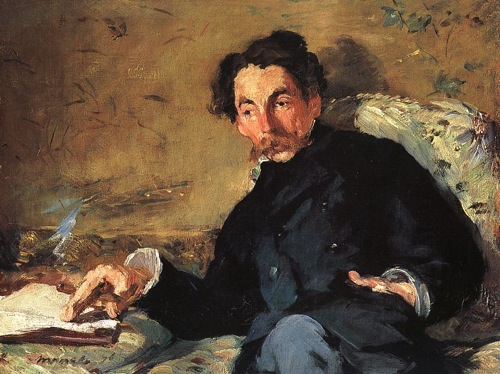
The Symbolist movement in literature and art was spearheaded by members of the 1834-43 cohort: e.g., Auguste Villiers de l’Isle-Adam, Stéphane Mallarmé, Algernon Charles Swinburne, Henri Fantin-Latour, Odilon Redon. (Paul Verlaine, born in the cusp year of ’44, is an honorary OD; Gustave Moreau was born earlier.) Certain of their predecessors (Baudelaire, Poe) also used symbols; in an almost paranoid fashion, though, the Symbolists — who laid emphasis on dreams and ideals vs. reality — invested every object in the universe with symbolic value; anything could represent a state of mind. Speaking of states of mind, some (but not all) Symbolists enjoyed brooding upon mystical and otherworldly themes, the inevitability of death and decay, and the fatal power of sexuality. This was an outgrowth of the gothic side of Romanticism; but where Romanticism was impetuous and rebellious, symbolist art was hieratic. Also, instead of romantically privileging the nitty-gritty over the imagination, Symbolists insisted that art should aim to capture more absolute truths which could only be accessed by indirect, suggestive methods.
As I’ve said in a post about the Anarcho-Symbolist cohort, Symbolism was a quasi-occult mode of knowledge deliberately opposed to the positivism of the period. In his 1899 book The Symbolist Movement in Literature, which introduced French Symbolism to the English-speaking world, Symons calls symbolism “a form of expression… for an unseen reality apprehended by the consciousness.” In a 1900 essay, William Butler Yeats derided the realist trend (“scientific movement”) in literature and praised instead the symbolist tendency, because it “call[s] down among us certain disembodied powers, whose footsteps over our hearts we call emotions.” The artist, in this philosophy, is a hierophant communing with the occult truths hidden by the “veil” called reality.
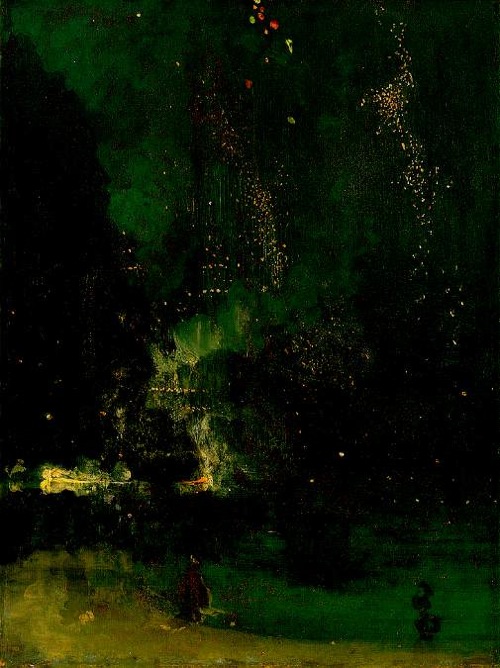
Aestheticism, the British branch of Symbolism, was pioneered by Swinburne, James McNeill Whistler, and Edward Burne-Jones, and it was influenced by Walter Pater: all (except Burne-Jones, born in the cusp year of ’33) of whom were born from 1834-43. The Aesthetes developed a cult of beauty, and insisted — against sentimental, romantic critics — that Art does not have any didactic purpose; it need only be beautiful. The main characteristics of the movement were (anti-realistic) suggestion rather than statement, sensuality, heavy use of symbols, and synaesthetic effects. When Whistler’s 1875 painting “Nocturne in Black and Gold: The Falling Rocket” was exhibited, the romanticist art critic John Ruskin claimed he was “flinging a pot of paint in the public’s face.” In the subsequent libel trial, Whistler insisted that the public should see his works not as (merely) imparting information about an external world, but as something that “should stand alone, and appeal to the artistic sense of eye.”
Pragmatism
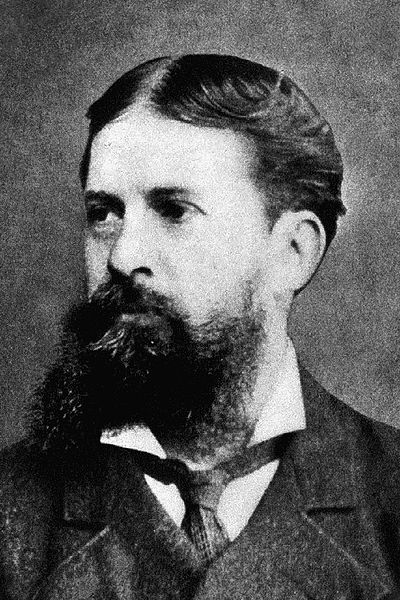
This post has mostly avoided looking at the influence of the American Civil War on members of the OD generation. According to Louis Menand’s The Metaphysical Club, a portrait of Justice Oliver Wendell Holmes, Jr., psychologist William James, and polymath Charles Sanders Peirce (all of whom were born from 1834-43), the Civil War “swept away … almost the whole intellectual culture of the North…. It took nearly half a century for the United States to develop a culture to replace it, to find a set of ideas, and a way of thinking, that would help people cope with the conditions of modern life.”
What replaced the ideological, unpractical intellectual culture of the North (i.e., Boston and New York transcendentalists and abolitionists) was pragmatism, an anti-metaphysical philosophical movement whose pioneers claimed that an ideology or proposition is only true if it works, and that unpractical ideas are to be rejected. The truth of an idea needed to be tested to prove its validity, insisted Peirce, James, and Holmes — and, after them, the positivists, radical empiricists, instrumentalists, verificationists, conceptual relativitists, and fallibilists who dominated most of the 20th century.
Pragmatism is the flip side of Symbolism and Aestheticism. As Adorno would demonstrate in his debates with positivist social scientists, Pragmatism might seem ultra-modern, but it’s always also very much a romantic ideology.
Meet the Original Decadents.
HONORARY (1833): Edward Burne-Jones (British artist and designer, Aesthetic Movement), Félicien Rops (Belgian painter associated with so-called Decadent movement); perhaps Edouard Manet (French painter who bridged Realism and Impressionism, born in 1832).
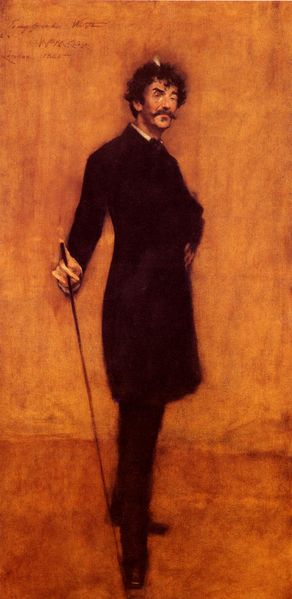
1834: James McNeill Whistler (American realist artist and dandy), Edgar Degas (French Impressionist painter, preferred to be called a realist), Ernst Haeckel (German zoologist and philosopher, proponent of evolution and amazing illustrator of undersea life), Gottlieb Daimler (German engineer, invented the motorcycle), Charles W. Eliot (president of Harvard University), Peter Widener (American businessman; one of the richest Americans in history), Big Jim Fisk (American financial buccaneer), Artemus Ward (American humorist), John Venn (British mathematician, Venn diagram), Marshall Field (founder of Marshall Field’s department store chain; one of the richest Americans in history), Dmitri Mendeleev (Russian chemist, Periodic Table of the Elements), Ludovic Halévy (French vaudevillain author), George du Maurier (British caricaturist, Punch, author of urban Gothic fiction), W. C. Minor (prolific OED contributor), Léon Walras (French economist, founded the marginalist school of economics), Frederick Weyerhaeuser (founder of Weyerhaeuser Company; one of the richest Americans in history), John Wesley Powell (American geologist, explored the Colorado River), Johann Philipp Reis (German physicist and inventor), Samuel Pierpont Langley (American astronomer, physicist, and heavier-than-air flying machine pioneer), August Weismann (biologist, theory of Germ Plasm). HONORARY POST-ROMANTICS (born 1834): Frédéric Auguste Bartholdi (French sculptor, designed Statue of Liberty), William Morris (English poet and artist, Arts & Crafts movement), Carl Heinrich Bloch (Danish painter whose religious scenes are often used in Mormon literature).

1835: Mark Twain (American author and humorist, Huckleberry Finn), Samuel Butler (iconoclastic English author of the Utopian satire Erewhon and The Way of All Flesh, also known for his translations of The Iliad and The Odyssey ), Andrew Carnegie (American robber baron and philanthropist; one of the richest Americans in history), Giovanni Schiaparelli (Italian astronomer discovered “canals” on Mars; uncle of Elsa Schiaparelli), Elisha Gray (American electrical engineer who co-founded the Western Electric Manufacturing Company, developed a telephone prototype before Alexander Graham Bell; considered to be the father of the modern music synthesizer), Mirza Ghulam Ahmad (Indian Muslim religious figure, founded Ahmadiyya), John Hughlings Jackson (father of British neurology, clinical descriptions of epilepsy’s stages), Simon Newcomb (Canadian-American astronomer, author of the Nautical Almanac, and a science fiction novel: His Wisdom the Defender), Eduard Strauss (Austrian composer, part of the Strauss musical dynasty), Jožef Stefan, Slovenian physicist, mathematician, and poet who determined the temperature of the Sun’s surface), King Léopold II of Belgium (founder of the brutal Congo Free State), Alfred Austin (English poet laureate), Pope Pius X (reversed modernizing trend of Leo XIII), Adah Isaacs Menken (American actress and adventuress), Giosuè Carducci (Italian writer, Nobel Prize laureate), Camille Saint-Saëns (French composer), Adlai E. Stevenson (US Vice President, grandfather of namesake presidential candidate), Adolf von Baeyer (German chemist, Nobel Prize laureate who synthesized the plant dye indigo), Rani Lakshmi Bai (Indian freedom fighter), Olympia Brown (lady preacher and suffragette), Susan Coolidge (novelist, What Katy Did), Joseph E. Nathan (founder of Glaxo), Iwasaki Yataro (founder of the Mitsubishi companies).
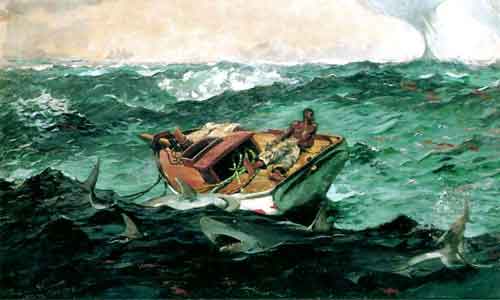
1836: Winslow Homer (magazine illustrator turned preeminent American painter), Leopold von Sacher-Masoch (Austrian novelist and utopian thinker, Venus in Furs; the term masochism is derived from his name), Sir Walter Besant (novelist, All Sorts and Conditions of Men), Milton Bradley (board games), Henri Fantin-Latour (French symbolist painter and printmaker), W. S. Gilbert (British playwright and librettist, Gilbert & Sullivan), Jay Gould (railroad baron owned Union Pacific; one of the richest Americans in history), T. H. Green (philosopher, Prolegomena to Ethics), Bret Harte (author, master of the western short story), Frederick A. O. Schwarz (founder of FAO Schwarz), Lewis Waterman (invented the fountain pen), Mendele Moykher Sforim (Russian Yiddish writer), Ramakrishna Paramhansa (Bengali religious leader), Isabella Beeton (British cook and expert on household management), Touch the Clouds (chieftain of Teton Lakota Sioux), Thomas Crapper (British plumber, inventor who did much to popularize the water closet).

1837: Mother Jones (activist), William Dean Howells (socialist, Atlantic Monthly editor, Realist novelist, The Rise of Silas Lapham), Algernon Charles Swinburne (controversial pseudo-decadent British poet, influenced by French symbolism), Grover Cleveland (22nd & 24th US President), Henry Draper (astronomer, early astrophotographer), Wild Bill Hickok (gunfighter and actor, Buffalo Bill’s Wild West show), J. Pierpont Morgan (banker and railroad financier, J. P. Morgan & Co.; one of the richest Americans in history), William Quantrill (Quantrill’s Raiders), John Burroughs (naturalist), Johannes Diderik van der Waals (Dutch physicist, Nobel Prize laureate), Dwight L. Moody (American evangelist), Adam Opel (German engineer and industrialist), Robert Gould Shaw (American Civil War General, reformer), Harriet Powers (African-American folk artist).
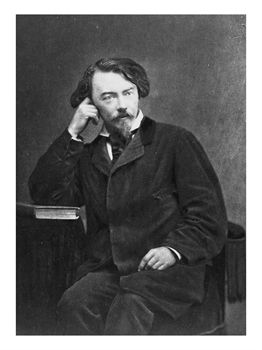
1838: Auguste Villiers de l’Isle-Adam (French symbolist writer), Edwin A. Abbott (author, Flatland), Henry Adams (Historian, The Education of Henry Adams), General Tom Thumb (circus performer), Franz Brentano (German philosopher, psychologist who influenced Freud and Husserl — “perception is misception”), Cleveland Abbe (physicist, America’s first weatherman), Georges Bizet (French composer, Carmen), John Wilkes Booth (Abraham Lincoln’s assassin), Léon Gambetta (French head of state), John Hay (US Secretary of State, 1898-1905), Eli Lilly (founder of Eli Lilly & Co.), Ernst Mach (optical and sensory perceptualist), John Muir (activist, ecologist), William Henry Perkin (chemist, invented mauve), Henry Sidgwick (philosopher), James Craig Watson (astronomer), Victoria Woodhull (activist, first woman candidate for US President), Ferdinand von Zeppelin (builder of rigid airships), Emile Loubet (president of France).
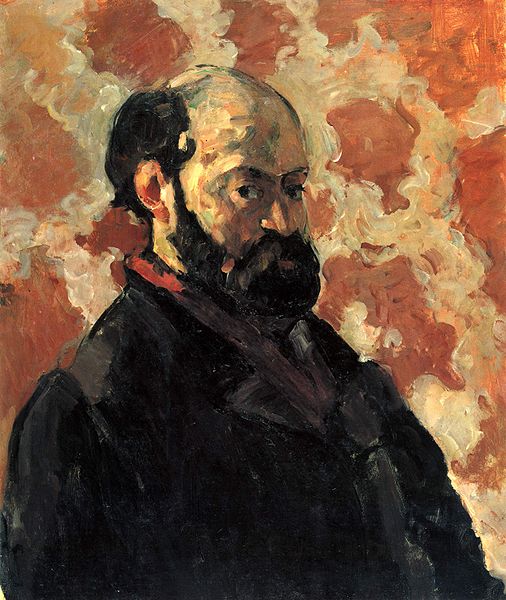
1839: Paul Cézanne (French impressionist and post-impressionist painter, bridge to Cubism), Charles Sanders Peirce (philosopher, mathematician, semiotician — Pragmatism), Walter Pater (English art critic, influenced Aestheticism movement), Oliver Payne (American businessman, organizer of the American Tobacco trust, and assisted with the formation of U.S. Steel; one of the richest Americans in history), Alfred Sisley (English impressionist painter), John Butler Yeats (Irish artist), Machado de Assis (Brazilian author), John D. Rockefeller (oil magnate, philanthropist; richest person in history), Henry George (political economist who argued that land belongs to all humanity), George Armstrong Custer (American cavalry officer), Adolphus Busch (German-American beer pioneer).
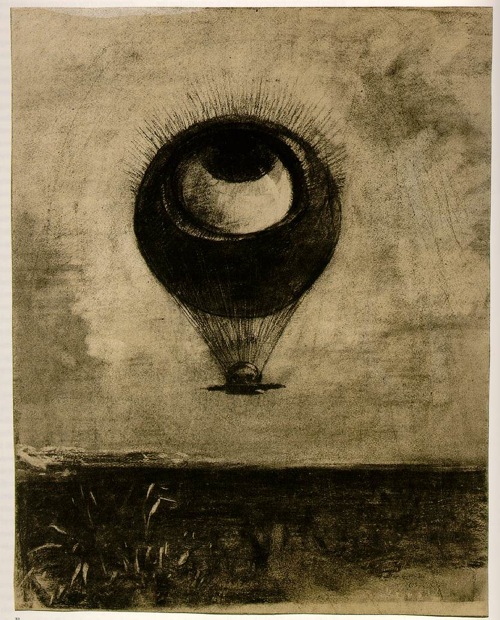
1840: Odilon Redon (French symbolist artist), Thomas Hardy (English writer, Tess of the D’Urbervilles), Auguste Rodin (French sculptor, progenitor of modern sculpture), Chief Joseph (Nez Percé chief), Claude Monet (French realist turned impressionist painter, founder of that movement), Henry Huttleston Rogers (American capitalist, businessman, industrialist, financier, and philanthropist; one of the richest Americans in history), William Graham Sumner (Yale professor, social Darwinist who argued for a laissez faire and free market economy), Thomas Nast (American political caricaturist), Peter Ilyich Tchaikovsky (Russian romantic composer, Swan Lake, The Nutcracker), Emile Zola (naturalist French novelist, liberal activist who precipitated the Dreyfus Affair), Richard von Krafft-Ebing (Austro-German sexologist and psychiatrist, coined the terms sadism and masochism), Alphonse Daudet (naturalist French novelist), Sir Benjamin Baker (engineer, designed the Forth Bridge), Edward Drinker Cope (prolific paleontologist), Isabelle Stewart Gardner (eccentric Bostonian art patron, collector), Sir Hiram Maxim (invented Maxim machine gun), John Addington Symonds (English art critic, poet), Ernst Abbe (German physicist, developed optical instruments), John Boyd Dunlop (Scottish inventor, founded tire company).
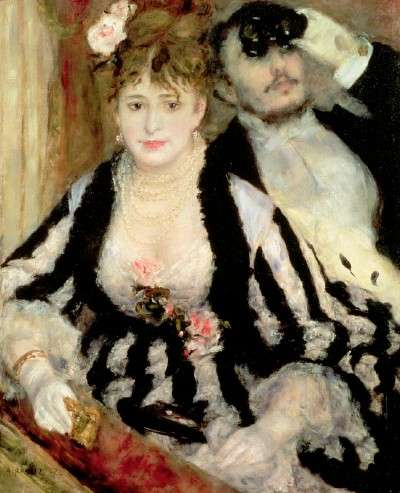
1841: Pierre-Auguste Renoir (French impressionist painter, father of Jean Renoir), Frédéric Bazille (French impressionist painter), Armand Guillaumin (French impressionist painter), Berthe Morisot (French impressionist painter), Henry Morton Stanlet (Welsh journalust and explorer), Oliver Wendell Holmes, Jr. (influential American judge, pragmatist), Antonín Dvořák (Czech composer of romantic music), Charles J. Guiteau (president Garfiel’s assassin), Georges Clemenceau (French statesman), Edward VII (King of England, Edwardian period named after him), William Henry Harrison (9th US president), Bernadette Soubirous (religious visionary), Alfred Cornu (French physicist, studied optics and spectroscopy), Benjamin F. Goodrich (founded Goodrich — tires), Gerard Heineken (Dutch beer brewer).
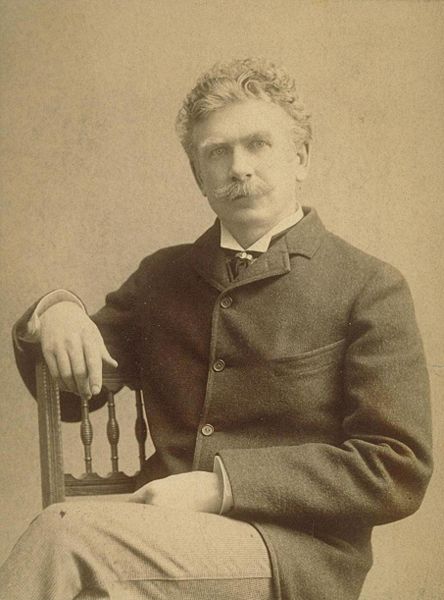
1842: Ambrose Bierce (American writer and satirist, The Devil’s Dictionary), William James (pioneering American psychologist and philosopher — Pragmatism), Stéphane Mallarmé (French symbolist poet), Peter Kropotkin (Russian anarchist), Karl May (German writer of westerns), Carl Jacobsen (Danish brewer — Carlsberg), John Fiske (American intellectual historian), Eduard von Hartmann (German philosopher), Crazy Horse (Sioux chief), Lord Rayleigh (English physicist, first to explain why the sky is blue), Arthur Sullivan (composer, Gilbert & Sullivan).
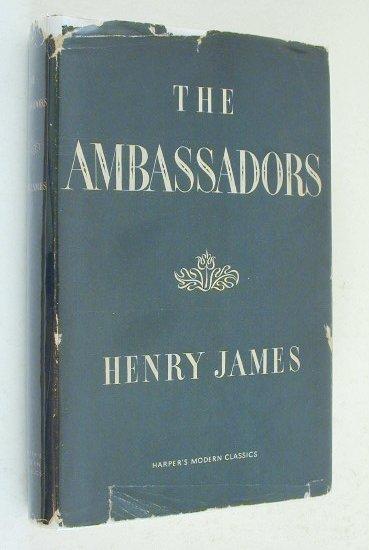
1843: Henry James (author, Portrait of a Lady), William McKinley (25th US President), Lillie Hitchcock Coit (San Francisco eccentric philanthropist), Virgil Earp (gunfight at the O.K. Corral), Prentiss Ingraham (Dime novelist wrote 600 Old West novels), Cornelius Vanderbilt II (socialite, businessman). Honorary Prometheans: Pierre Lallement (French inventor of the bicycle), Gabriel Tarde (French sociologist — Group mind, Theory of Imitation — and author of one science fiction novel), Frank James (bank robber, with James Gang).
Honorary (born 1844): Paul Verlaine (poet, leader of symbolist poetry movement), Anatole France (French novelist), Thomas Eakins (American realist painter), Mary Cassatt (American realist-impressionist painter), Aaron Montgomery Ward (founded Montgomery Ward). NB: Friedrich Nietzsche also born 1844.
NB: Somewhere in the early 19th century, according to patterns I’ve discovered via research and abductive methods, our decade/generation scheme shifts from a “4-3” to a “5-4” pattern. It seems fairly obvious that the shift happened in Paris, in 1830 — thanks to (a) the “battle of Hernani” waged by the Jeunes-France on behalf of romanticism vs. rules in poetry and proper language on the stage; (b) the July Revolution, which installed the “bourgeois king” Louis-Philippe and signaled the first triumph of the middle class in world affairs; (c) Berlioz’s Symphonie Fantastique, which shattered the convention of “four-squareness” in melody, the rigidity of rhythms, and the predictability of harmonic formulas; and, finally, (d) at the Academy of Sciences, the break between Cuvier and Geoffroy Saint-Hilaire over Lamarck’s hypothesis (which chimed with the Romanticist idea that everything is alive and in motion) about the transformation of species, i.e., Evolution. As a result, the the Eighteen-Twenties lasted only nine years: 1825-33.
Which means the Post-Romantics are a slightly smaller generation than every other one in my scheme. Those born in a 3 or 4 year after 1825 are cuspers; those born in a 4 or 5 year before 1833 are cuspers.
ADVENTURE: Mark Twain (Top 200: Adventures of Huckleberry Finn).
